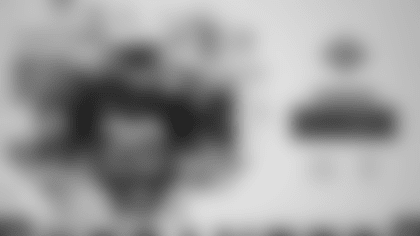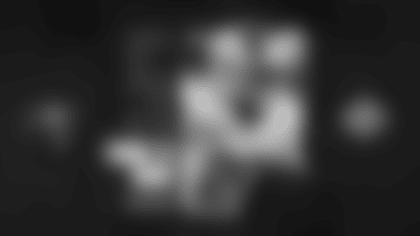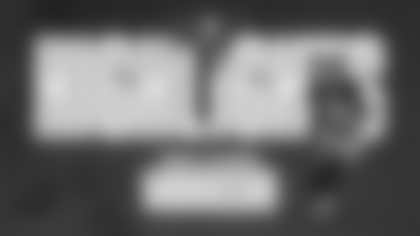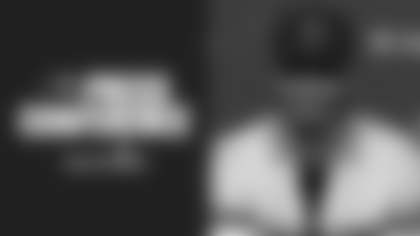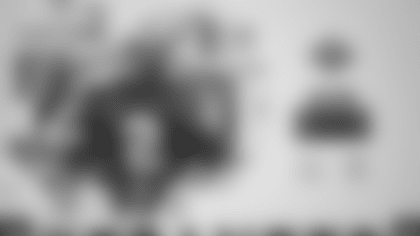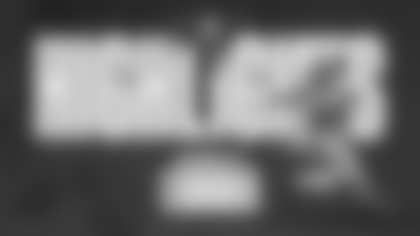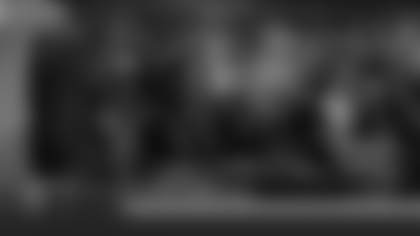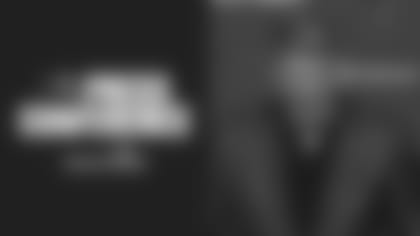The Buccaneers are going to look different in 2019. There will be the mandatory roster shuffling that comes every offseason as teams scramble to abide by the salary cap while ensuring they retain homegrown talent. It's an extremely delicate process. But that's not the main reason. No, the Buccaneers will also look different on the field itself due to changes in scheme that come with a brand-new coaching staff.
Buccaneers General Manager Jason Licht took to the podium on Tuesday and prefaced his press conference by talking about communication. He was speaking specifically on the communication between him and Head Coach Bruce Arians throughout this year's draft process and how that matriculates throughout their respective staffs. It's especially important given that Licht and his team will be tasked with acquiring players that fit in with coaching vision, therefore it's up to the coaching staff to make sure the personnel staff understands that vision thoroughly.
And what does that vision look like?
On defense, it looks like a system devised by Defensive Coordinator Todd Bowles that's only categorically defined as a 3-4 defense out of convenience, or maybe more often, character allowance. Three-four indicates three down linemen with four linebackers at the middle level. Not to spoil anything, but you aren't going to see that very much this season. In fact, you'll see it less than 30 percent of the time, to be more exact. What you will see is a hybrid that also lends itself to the Bucs' predecessor at times, the 4-3, especially in nickel packages that feature five defensive backs. That type of defensive alignment showcases an even front, with four down linemen, all of which are hell-bent on rushing the passer in some way shape or form. It gets more fluid when you talk about the inside linebackers' role and what exactly those five defensive backs are doing. It's always changing, thriving on the confusion it creates.
Because of this fluidity, the players that play in it are also subject to shifts and change. It means there isn't necessarily a mold for each position and there is room to play to each players' strengths, fitting him in where he'll be most successful. Bowles has communicated this approach to Licht and his team, which in turn, actually makes their jobs a bit easier. It takes less pressure off acquiring the right 'fit' and allows for a tailor-made approach to those players already in-house.
"Not as much as you think because of Todd [Bowles'] system, where it's a little bit interchangeable," Licht said, speaking on how differently he's approaching this draft because of the new coaching staff. "I'm sure we'll get some base 4-3 looks, obviously some 3-4 looks. You play 70 percent as nickel, so that doesn't change. But if a player isn't the ideal at whatever position it is, [Bowles] does a great job of changing things to where he becomes ideal for it."
That means some big-time opportunities for players on defense to make strides in their individual games. It also presents a way for some players, namely Vita Vea, Vernon Hargreaves and Noah Spence, to return to some familiarity with their more formative years of football. Vea, the team's first-round draft pick last year, is an interior defensive lineman who spent the majority of his college career at the University of Washington playing nose tackle in a 3-4 defense. He was the guy in the middle, head up on the center, commanding double teams and even accounting for two gaps in the middle. It made him a run-stopping machine. Then at the NFL level, he played in a 4-3 system his first year, learning how to operate out of a one and three-technique, therefore dealing with a guard or tackle on the other side of the trenches and accounting for different gaps than he was used to. The combination of his size and agility physically make him a fit regardless of scheme but now it looks like he'll get to go back to that nose tackle position he was so dominant at in college.
In addition to Vea, there's Vernon Hargreaves, too. Now fully healthy, he's excited about returning to a press outside corner role because it's what he feels he does best. Then there's a guy you haven't heard much from the past couple seasons due to unfortunate and untimely injuries: edge rusher Noah Spence.
"Take Noah, for example," Licht said, calling out a player he feels can thrive in Bowles' system. "As a rookie, he had 5.5 sacks, we were excited about the direction he was going. He had some injuries, he was essentially a DPR [dedicated pass rusher] and you can have a DPR on your roster if you're a 4-3 team. I think we knew at the time that he was probably better suited for a 3-4 but we still saw the value where we took him as an edge rusher; sub-rotational DPR. I don't think it really delayed his development, I just happen to think that in his case, playing in a 3-4 is what he's more ideally suited for."
And now he'll get his chance for the first time in his professional career.
"I'm very excited about Todd's scheme and seeing it firsthand and talking it through with him," Licht said. "He's got an attacking mentality. The defense is going to attack – it's a pressure defense. And those guys are better suited for that."
This brings up the notion that there are guys better suited for one system over the other, and to some extent, there are traits and measurables you want, sure. A 4-3 defensive end, for instance, should be a little bigger, a little taller, so as to give him an advantage against the opposing offensive tackles he's routinely going up against on every play. A 3-4 outside linebacker can get away with being a little bit smaller, so long as he's faster and can beat outside protection with his speed to get to the quarterback. But there's more room for variety in the latter, which widens the scope of the personnel lens, for better or worse.
"You probably look for a little bit different-type of defensive end than you would in a 4-3, but those old 4-3 defensive ends now become outside linebackers," Licht said. "They can't all do it, but a lot of them can. It gives you more of a pool of players at outside linebacker than if you are in a 4-3, just because there's more of those undersized guys in college than there are true, prototype six-foot-five, 300-pound, 35-inch arms defensive ends in a 3-4."
Now broaden the lens to all defensive positions. Yes, this a defensive-line-heavy draft, but what does that mean in regard to what player and which position you take first? When does the notion of perceived positional value come into play? That is, that one position is more valuable than another so you address it early. Or does that come into play at all?
The short answer: it doesn't.
"Really you have to grade the players how you feel they are in terms of just how a football player," Licht explained. "Maybe that's not perceived but some years it ends up being that. I don't think a five-foot-ten quarterback has ever gone in the top five, so it's just different year to year. I don't think you can take the perceived notion that you can't take a certain player of a certain size of a certain position at a certain point. We'll rank the players [based on] how they can make an impact for us."
That opens up the door for all kinds of options with the fifth overall pick and because of the ability for current players to thrive within this new system, Licht and his team can consider all of them.



